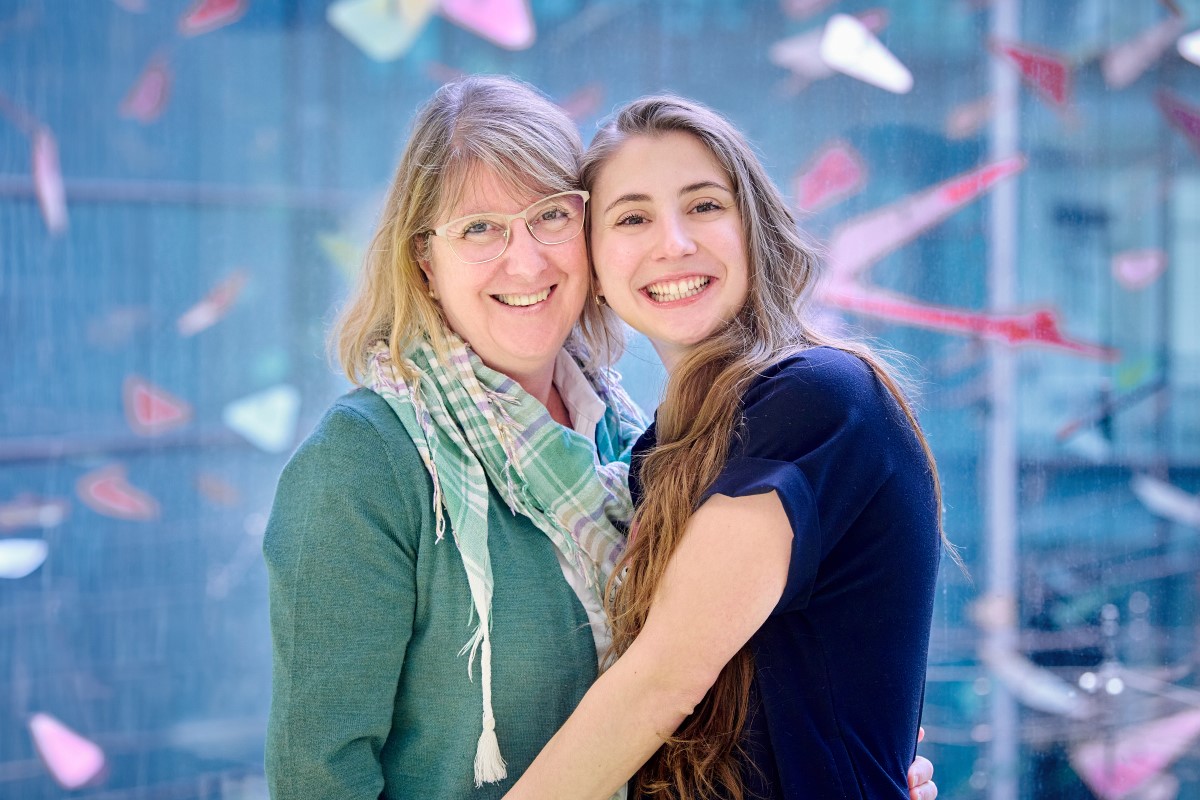The expert teams at Sainte-Justine make incredible things happen every single day. Things that would have been thought impossible only a few short decades ago. And it’s all because of the spectacular advances in medical research that have been made in recent years, and the donors who support them.
Cylia Maria was born at 22 weeks. She is one of those babies who, not so long ago, would not have been saved. But thanks to the leading-edge expertise in neonatal medicine at Sainte-Justine, she is alive today. Not only that, but she has also overcome the many challenges that face extreme preemies and is hitting all her developmental milestones.
Her parents, Asma and Yassine, came to Quebec as Ukrainian refugees. One night, two months after they had arrived, Asma woke up in the wee hours, bleeding heavily. She and Yassine checked in to their local hospital, where a swift decision was made to send her to the one place where her baby would have a fighting chance: Sainte-Justine.
The medical teams jumped into action to stabilize Asma’s condition. They new that every extra day the baby spent inside her womb would considerably increase the chances of survival. Three days later, however, there was nothing else they could do. Delivery was inevitable.
“They explained all the risks for the baby,” recalls Asma. “They said she might not ever walk or talk, or go to school like other children. We might have to spend up to two years in the NICU. She might be blind, or she might not make it at all. It was so hard to hear that. The likelihood of serious complications was very real.”
Touch and go for the first month
When she was born in September 2023, Cylia Maria weighed a mere 480 grams. And so her fight began. In the NICU, Cylia Maria had access to state-of-the-art technology and a dedicated team of professionals who watched over her, day and night.
She didn’t even look like a baby. She was so tiny, and there were tubes everywhere. She couldn’t breathe or feed on her own.
The first weeks were critical. They feared for her life more than once. It took 10 whole days before her mother could even hold her. “I was overjoyed to finally have her in my arms, but I was terrified. Her skin was so fragile, and she was connected to so many wires and tubes. It took a whole team to get us set up. But after that, we had several hours of skin-to-skin contact every day.”
It wasn’t long until Cylia Maria started to make some pretty impressive progress. “After about three months, we could take her out of the incubator and start dressing her,” her parents say. “That was a huge victory. So was the first time we gave her a bath!”
Asma, Yassine and Cylia Maria would end up spending eight months at Sainte-Justine before they were sent home. She was discharged with supplemental oxygen and a feeding tube, but everything was on the right track.
Fast forward to today: Cylia Maria is 16 months old and doing remarkably well. She doesn’t need any respiratory assistance anymore and is eating on her own. She’s developing like any other baby. At long last, her parents can breathe a sigh of relief.
It’s a miracle that, so far, our daughter isn’t showing any long-term effects of her prematurity, apart from being nearsighted. She has a bright future ahead of her, thanks to the outstanding care she received at Sainte-Justine.
A future where all premature babies survive, and thrive
Asma and Yassine realize how lucky they are. They know that, for many other families, premature birth ends in tragedy. In Quebec, 6,000 infants come into the world preterm every year. How serious the longer-term effects are can vary from one case to the next, and it’s hard to know for certain what that means for their future.
It’s important to do everything we can to help Sainte-Justine continue to advance maternal and pediatric care, so that newborns like Cylia Maria can be saved.
That’s why Asma, Yassine and Cylia Maria will be the ambassador family for the much-anticipated 38th annual Cachou Tournament benefiting the CHU Sainte-Justine Foundation.
Through your support for Sainte-Justine, you are giving families like these hope for a better future. One scientific breakthrough at a time.
















